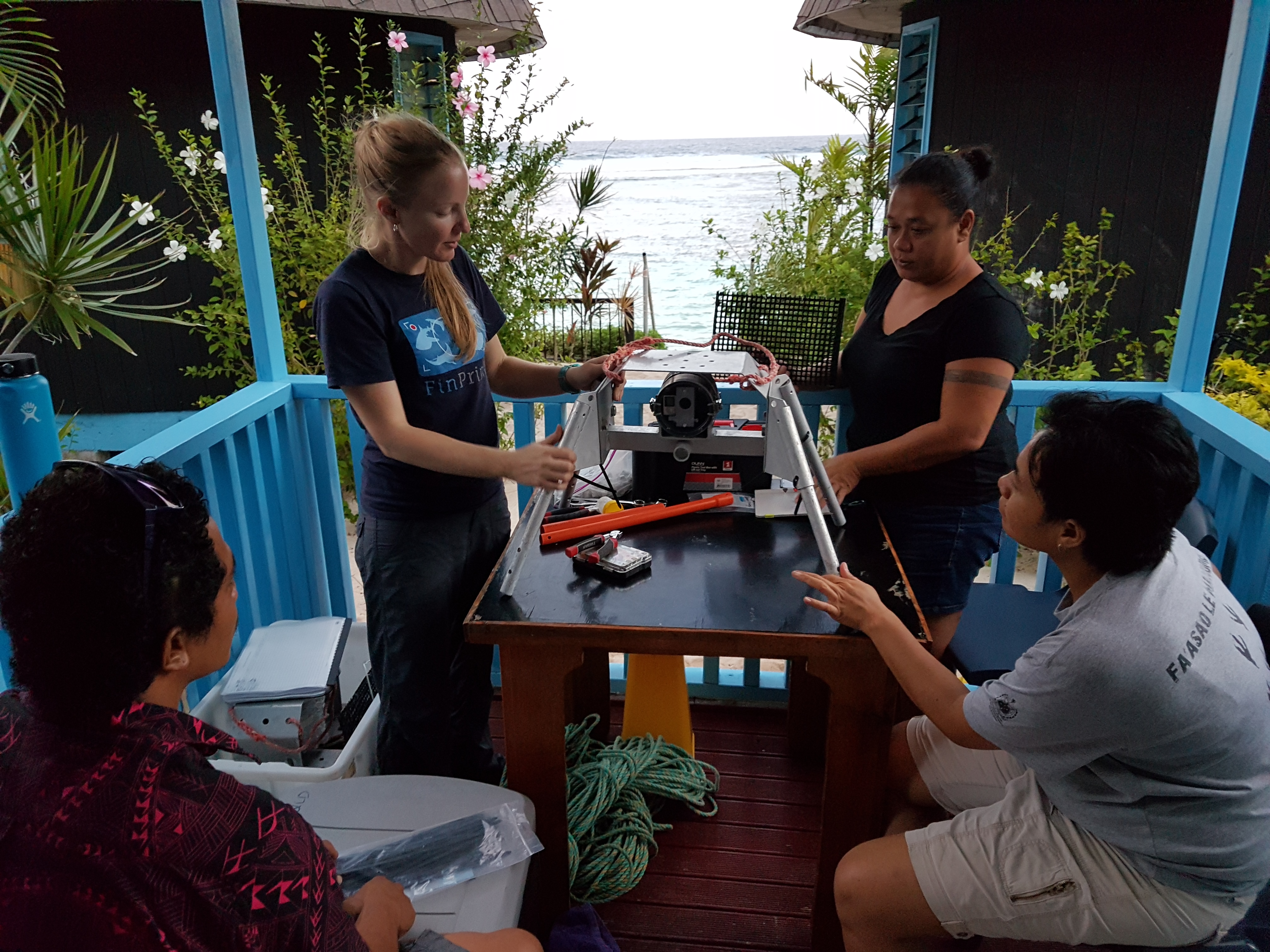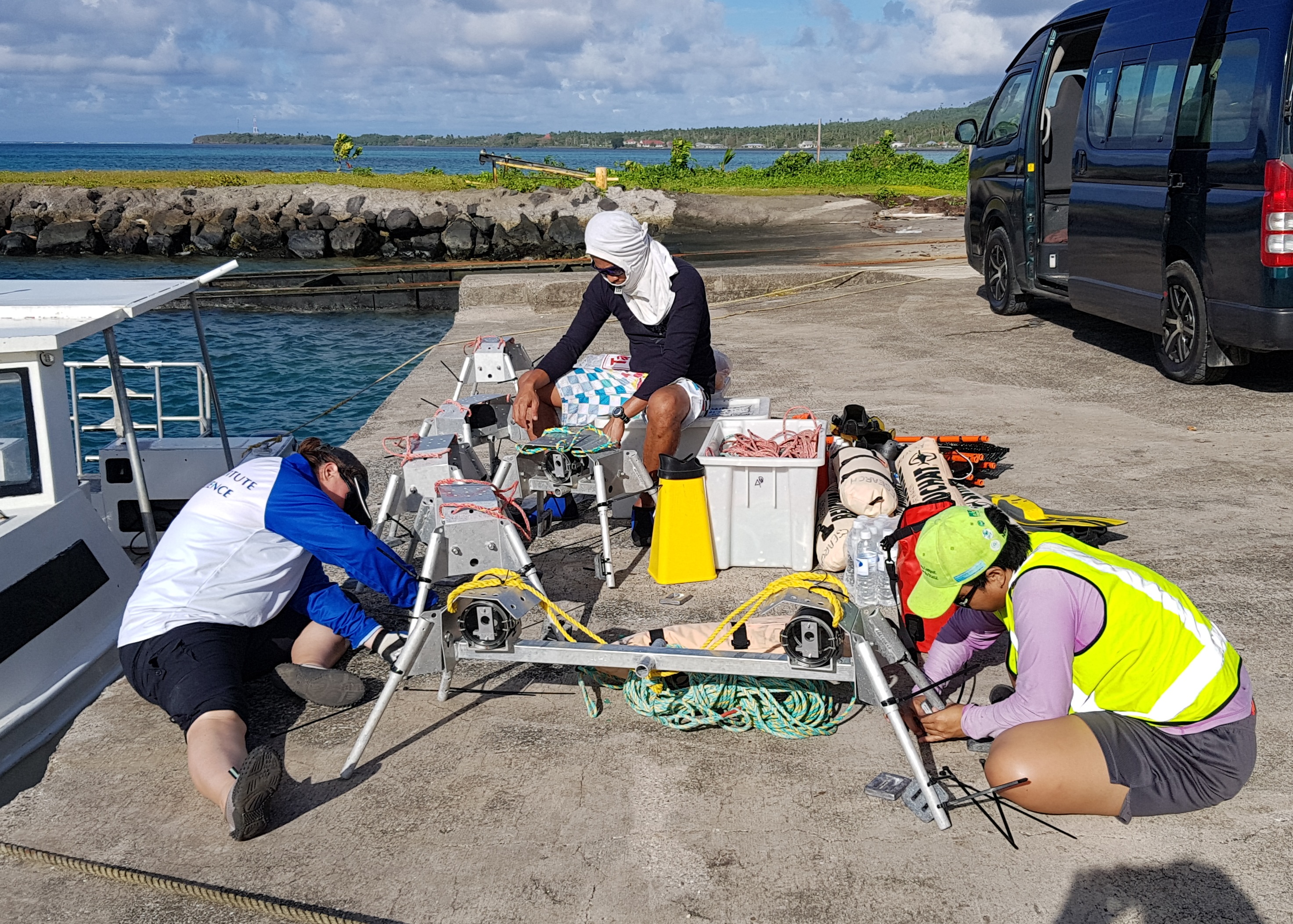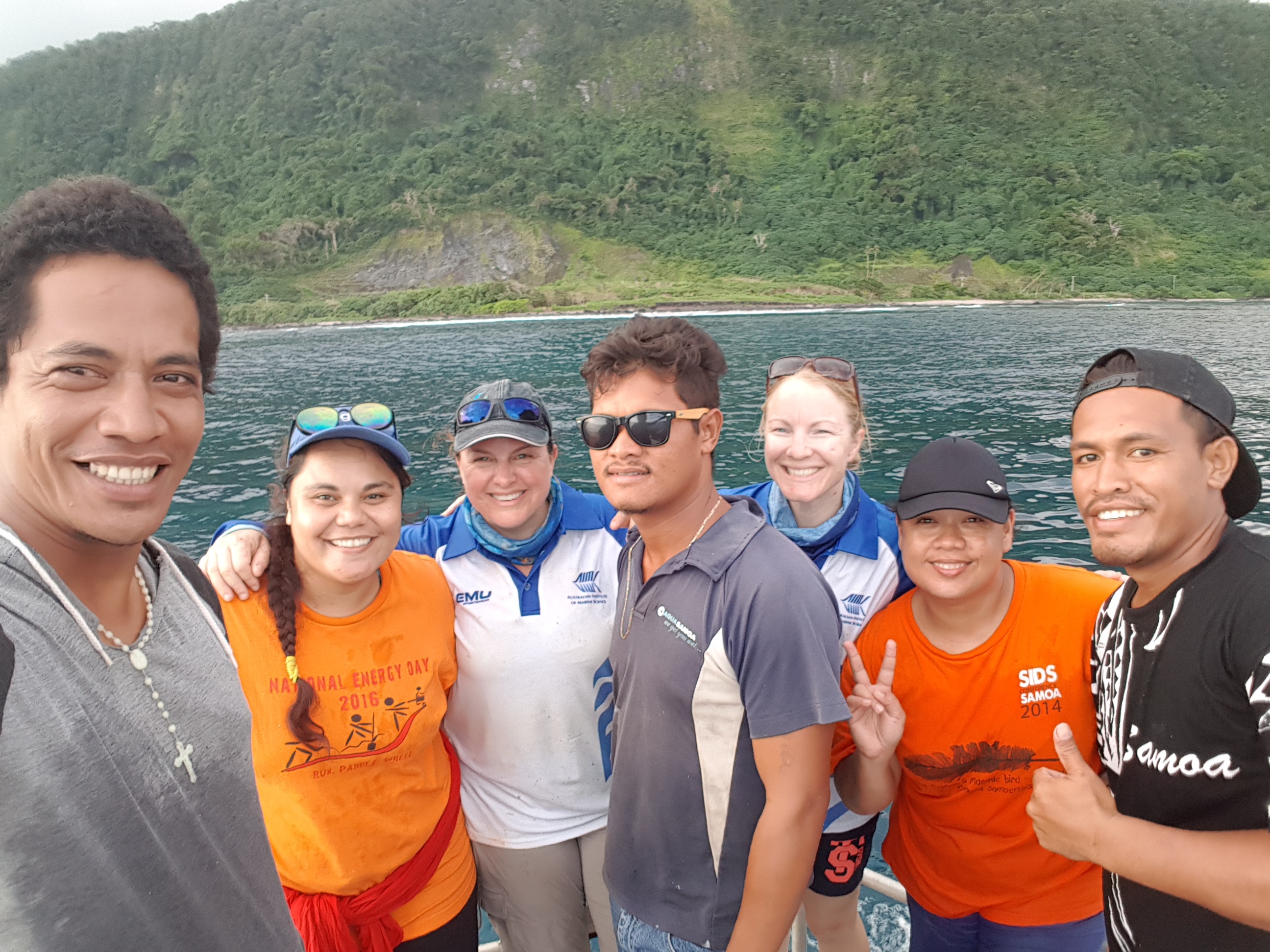
Biodiversity Conservation
Special surveys to assess the diversity and abundance of sharks and rays around Aleipata and Falealili, Samoa indicate a healthy abundance of different shark species
Over an eight day period in August, a team from the Australian Institute of Marine Science (AIMS), Ministry of Natural Resources and Environment, Fisheries Division and the Secretariat of the Pacific Regional Environment Programme (SPREP) conducted surveys, using baited remote underwater video systems or BRUVS.
The Global FinPrint Project aims at producing a standardised survey of shark and ray species in coral reef environments around the globe. Sampling more than 100 reefs around the Caribbean, Coral Triangle, Indian Ocean and the Pacific Ocean, the project's overall objective is combining the large-scale efforts to provide information on the human impacts, habitat use and baseline abundance, aiding management and conservation efforts for sharks and rays.

Leanne Currey from AIMS showing the team how to assemble BRUVS. Photo: SPREP
Ms Maria Satoa, Principal Marine Conservation Officer, stated that "Obtaining reliable data and useful information on shark and ray species in our waters is important considering there is very limited information available on the diversity and abundance of these species in Samoa."
Surveys around Aleipata and Falealili showed an abundance of different sharks present in these areas as well as the health of the corals.
Grey reef sharks, blacktip sharks and whitetip sharks were commonly observed around Aleipata. Nuulua Island which had good coverage of live corals also had a diversity of fish species and sharks. Falealili also had the presence of grey reef sharks and several rays and turtles. The coral reefs around both of these areas were heavily impacted by the tsunami, outbreak of the crown of thorn starfish and mass coral bleaching, which could perhaps explain the limited diversity of sharks present in these areas.

Audrey Schlaff, Pati Iene and Maria Satoa checking the equipments before the start of the survey.
Photo: SPREP
"Coastal sharks are very site specific and so if there is a change in the state of the coral reefs such as degradation, sedimentation and other factors that degrades the health of the reef, you will notice that sharks which are normally around these reefs are not present. This goes to show that sharks need healthy reefs," explained Ms Audrey Schlaff from AIMS.
Many sharks and rays are threatened with extinction, mainly from overexploitation by commercial fisheries due to the high demand for shark fins. For many of the Pacific countries, a lack of survey data on abundance and diversity of sharks and rays in their waters, especially for coastal sharks and rays, prevents the identification of areas where shark populations are heavily impacted by human pressures.
"The video footage collected for these areas not only showed the amazing sharks present but it also captured the interaction and behaviour of sharks with other species such as the turtles, trevallies, eels and rays. It was also interesting to see from the BRUVS footage a snapshot of areas that were included in a protected area programme versus areas that were open to fishing. BRUVS surveys would be a useful way to monitoring these areas over time to compare how effectively protected areas function," Said Ms Juney Ward, SPREP's Shark and Ray Conservation Officer.

Survey crew for Aleipata - MNRE, AquaSamoa crew, AIMS and SPREP. Photo: SPREP
The survey which was held from 2 – 10 August this year, provided a platform for the government personnel to be trained using the BRUVS with the intention that more surveys around other areas of Samoa will be surveyed in the future.
For more information please contact Ms Juney Ward at [email protected]